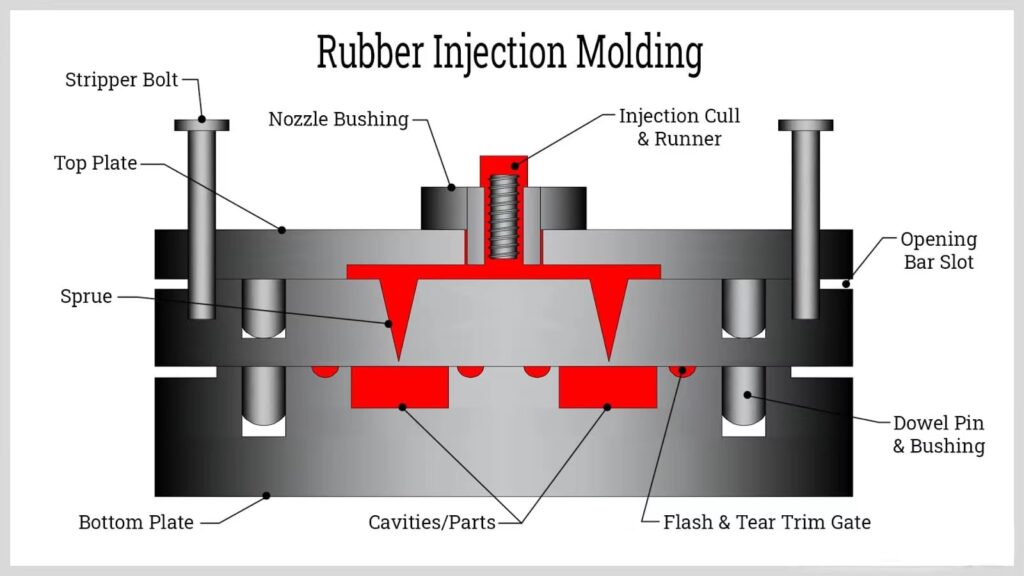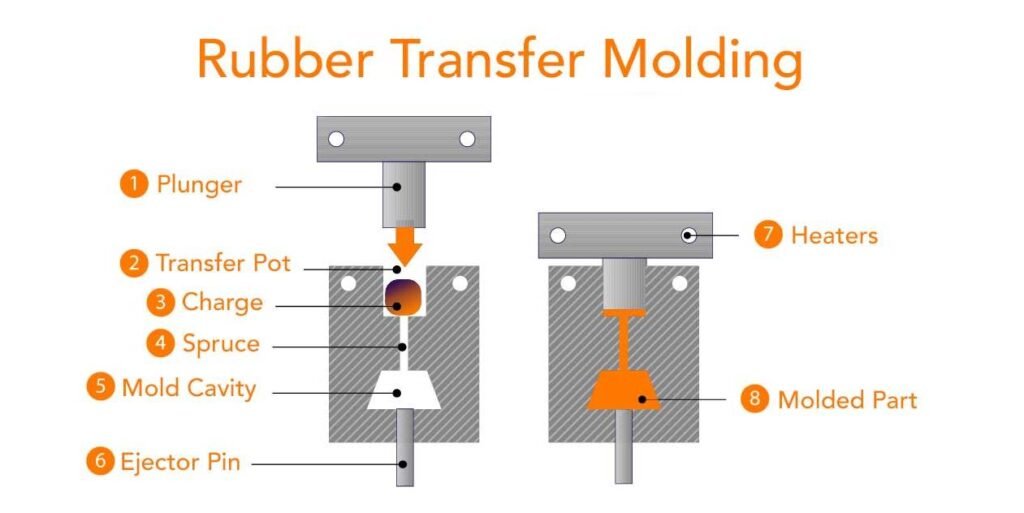Overview of Rubber Molding
The production of rubber items typically involves the molding process, which utilizes a metal mold to transform raw rubber into products. The molding process involves filling a mold cavity with rubber, heating, and pressing the material to create the desired shape. This method is widely used in the manufacturing industry as it allows for the fast and efficient creation of high-quality components with accurate proportions and exceptional mechanical properties, all at a cost-effective price and in a shorter time frame compared to alternative techniques.
This process takes place under the careful eye of skilled workers and engineers
Cost of Custom Rubber Molded Parts
For effective custom rubber molding, selecting the appropriate building material is of the utmost importance. The elastomer selection process might be complicated, but our staff has the expertise to guide clients in making the best choice. The cost of the custom rubber molded parts varies; you need to gauge it as per your requirements and needs.
Rubber Injection Molding
In the mid-1960s, a method initially utilized for the injection molding of plastics was adapted for rubber. Unlike plastic injection molding, which requires lower pressure per square inch of cavity surface and temperature, rubber injection molding involves heating the rubber and applying greater pressure. Thanks to advancements in technology, injection molding has evolved into a highly effective method for producing molded rubber items. With this method, a completed product of superior quality can be achieved, even when using higher temperatures and greater pressure. The process of material preparation is the first step in injection molding as well as injection molding with injection transfer.
After the components have been thoroughly combined in a sizable batch, they are swiftly cut into long, consistent strips that measure 1.25 inches in width and 0.375 inches in thickness. After that, the strips are fed into a screw that is wound around a barrel and is responsible for drawing the rubber in.
Advantages of Rubber Injection Molding
- Lessening of per-unit expenditures
- Minimized cycle times
- Very tight tolerances in all dimensions
Disadvantages of Rubber Injection Molding
- The more expensive initial investment
- It’s possible to waste material
- Increase in need for high-priced equipment

Rubber Compression Molding
Compression molding is a method for producing molds, also known as “pre-forms,” from a rubber compound or other raw material blend. These pre-forms come with an excess material that is used to ensure a complete fill of the cavity. The mold is then closed around the pre-form, and heat and pressure are applied to press the material into the cavity. Any excess pre-form material flows out through overflow channels. The final molded rubber product is revealed upon demolding, which is usually done by hand. This method of rubber molding is commonly used for medium hardness compounds, low-volume production, and other situations where material cost is a major factor. Compression molding reduces waste or “flash” during the molding process.
However, it requires the use of pre-forms, which can be challenging to incorporate into more complex mold designs. To better accommodate the flow needs of harder rubber compositions, compression molding may need to be adjusted.
Advantages of Rubber Compression Molding
- A less complicated procedure.
- There will be less money spent on tools.
- It’s perfect for making bulky objects and sturdy components.
Disadvantages of Rubber Compression Molding
- There is a lag in processing times.
- However, it can’t handle all intricate patterns.
- The possibilities of additional post-molding expenses are increased.

Rubber Transfer Molding
The molding material is measured, inserted, and put in the molding pot before the process begins. The material is transferred into the mold cavities by heat and pressure as it is heated.
Composite seals that “float” in the cavity may be easily made using transfer molding. Instead of being sliced straight into the same plate, cavities may move freely in and out of one another. This allows the mold to remain constant despite differences in tolerances.
The composite seal may be made with various inserts, including plastic and metal. These provide a multi-component sealing solution, which provides a more durable seal and helps minimize the total component count in assembly.
Advantages of Rubber Transfer Molding
- It has a brief production cycle
- There is a variety of design flexibility
- It offers a large count of cavities
Disadvantages of Rubber Transfer Molding
- There are complex molds
- You have to take care of mold maintenance
- There remains waste material

Choosing The Correct Rubber Material
Compression molding is a method that is often used by engineers in the process of producing rubber components. When deciding on a material, it’s essential to consider both the intended use and the potential environmental conditions. Rubber compounds vary greatly, so it’s essential to ask the correct questions throughout the selection process to ensure you get the one that best suits your application.
Zhongde Stock Dozens of Rubber Materials
If you have a firm grasp of some of these factors, you will be better positioned to keep product costs down while maintaining adequate performance levels. Looking for some guidance in this regard? This rubber material selection guide is what you need.
Rubber Molding with Zhongde
Are you seeking the most amazing rubber molding services? Zhongde is driven by a desire to assist businesses across industries in meeting the demands of their customers via the provision of bespoke, long-lasting goods at reduced costs. Our goal is to provide premium goods at record speed. Here are some of our bespoke projects.



